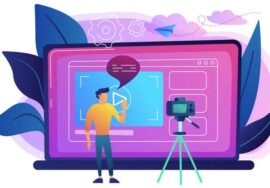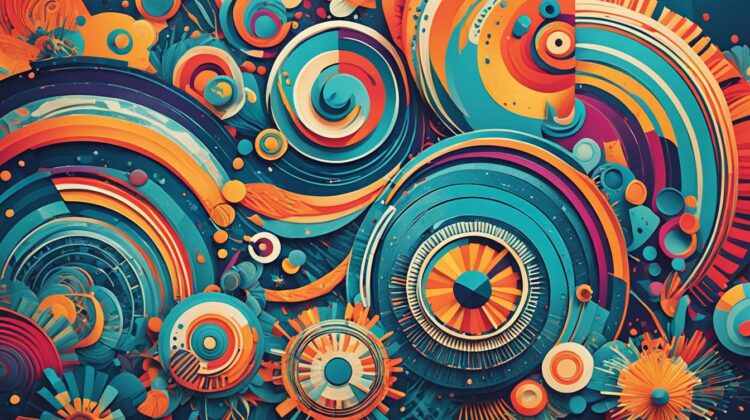
Graphic Design: Unleash Your Creative Potential
In the world of graphic design, every day is a chance to bring ideas to life. You get to turn them into stories that grab attention and inspire. Your work is like a canvas with no limits, where your imagination can soar. Every project makes you aim higher, innovate, and explore new possibilities.
Graphic design is key to modern communication. It includes branding, advertising, user experience design, and digital marketing. In India, graphic design is growing fast, offering great career chances for those with the right skills. The Design Village (TDV) in Delhi is a top place for graphic design education. TDV focuses on practical skills that are useful in the real world, getting students ready for the graphic design industry.
Key Takeaways
- Graphic design is a dynamic field that offers endless creative possibilities.
- India’s graphic design industry is experiencing rapid growth, presenting lucrative career opportunities.
- TDV College in Delhi is a leading institution known for its exceptional graphic design programmes.
- TDV emphasises practical, industry-relevant skills to prepare students for the dynamic graphic design industry.
- Choosing the right graphic design course is vital for career success in this competitive field.
The Power of Design
Design shapes our daily lives, affecting the products we use and how we communicate. Design principles like balance and contrast make things easier to use and understand.
Graphic design can make us feel things and change our minds. It’s used in many areas, from politics to branding, to shape how we see things.
Design’s Influence on Functionality, User Experiences, and Communication
Design’s impact on how things work and how we use them is huge. Good design makes products look nice and easy to use. This makes our interactions better.
Graphic design is key to clear visual communication. It can make complex info simple and touch our feelings. It’s used in many ways, from infographics to brand identities, to grab our attention and share messages.
| Design Principles | Influence on Functionality | Impact on User Experience | Role in Visual Communication |
|---|---|---|---|
| Balance, Contrast, Alignment | Enhance usability and accessibility | Improve engagement and interaction | Simplify information and evoke emotions |
| Colour, Typography, Hierarchy | Streamline navigation and task completion | Create memorable and user-friendly experiences | Convey brand identity and key messages |
| Repetition, Rhythm, Emphasis | Optimise product design and performance | Foster emotional connections and brand loyalty | Enhance visual appeal and storytelling |
“Design is not just what it looks like and feels like. Design is how it works.” – Steve Jobs
Design changes how we see the world. It makes things work better and looks nicer. Design can shape our experiences and what we think.
Graphic Design: Visual Storytelling and Communication
Branding, Advertising, Web Design, and Print Media
Graphic design blends art, typography, and visual communication to tell stories. It’s used in branding, advertising, web design, and print media. Graphic designers are key in making designs that connect with people.
They use typography, colour theory, and layout to stir emotions and send messages. A strong brand look across all platforms can boost sales by up to 23%. Visual content gets shared 40 times more on social media than other types.
Skills, Tools, and Career Opportunities
Graphic design offers many career paths, from branding to web design. Those skilled in typography, colour theory, and layout are in demand. Knowing tools like the Adobe Creative Cloud also helps.
Graphic design is more than a job; it’s a way to tell stories visually. It can greatly affect a brand’s success. In fact, 94% of first impressions are about design. And 75% of people judge a company by their website.
| Graphic Designer Profiles | Expertise and Achievements |
|---|---|
| Luca Poncellini | Lectures in Italy and several countries worldwide. |
| Patrizia Moschella | Collaborates with international research institutes and institutions. |
| Samuel Mathias Zitelli | Works with big national and multinational companies such as GLS, Salmoiraghi & Viganò, Marcegaglia. |
| Dionigi Mattia Gagliardi | Founded Numero Cromatico, an art collective, research center, and publishing house in 2011. |
| Fabio Pelagalli | Has been working at NABA since 2010 and has taught Software Art and Interactive System and Design Thinking at academic levels. |
Graphic design does more than look good; it shapes how people see brands, affects user experiences, and helps communicate effectively. It boosts brand recognition and loyalty, leading to a 65% increase in consumer engagement.
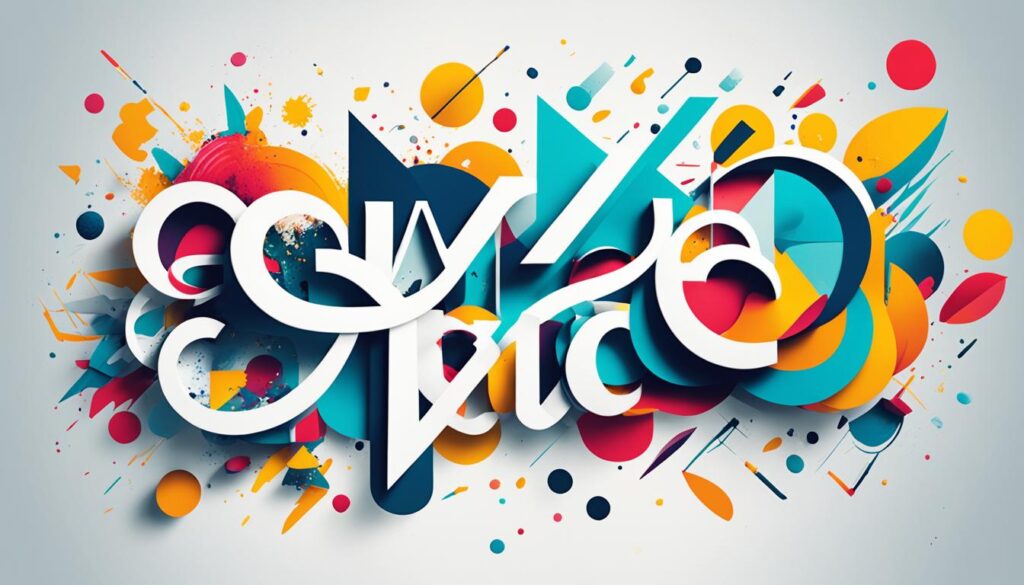
Graphic design lets you create striking brand identities, captivating ads, web designs, and print materials. It’s a field where creativity and skills meet.
Industrial and Product Design: Innovating Everyday Objects
Industrial and product design focus on making objects that are both useful and look good for mass production. Designers in these fields aim to improve how we use things, solve problems, and bring new ideas to life. They work in many areas like tech, furniture, cars, and everyday items.
Designers start with ideas, make prototypes, and go through strict production steps to create the items we use every day. They think about how things fit our bodies, what materials to use, and how to make them efficiently. This ensures their designs are not just pretty but also work well and are easy to use.
Some designs have changed the game, like the Heinz ketchup bottle, the Anglepoise lamp, the bendy straw, and the PEZ candy dispenser. These items have changed their industries and become symbols of design. They show how design can change our daily lives.
Designers need to be good at art, design, and using computer tools like CAD. They mix creativity with practicality. They sketch, make prototypes, and focus on what users want to bring their ideas to life.
Technology like Artificial Intelligence (AI) is changing design. AI makes design faster, more creative, and focused on what users want. Designers use technology and think about what users need to make new products that change our lives.
“Industrial design blends practicality, aesthetics, and engineering to create visually appealing products that enhance user experiences.” – John Doe, Design Consultant
Interior Design: Creating Inspiring Spaces
Interior design is all about making spaces that are both useful and look great. Designers use space planning, colour theory, materials selection, and lighting design to make places that help us feel good and work better. They work on both homes and businesses, making a big impact on our daily lives.
Principles of Interior Design and Well-Being
The Indian Institute of Interior Designers (IIID) sees interior design as a way to make spaces safe, useful, and beautiful. It started in 1972 in India, marking the beginning of formal education in interior design. Students get a B Des Interior Design degree, learning how to make designs that are both safe and strong. They also learn how to use materials and software at construction sites.
Designers need to know how to manage space and mix creativity with technical skills. Now, technology is a big part of interior design, showing how designers use tech to make smart homes and more .
Interior designers focus on making spaces that make us feel good and help us work better. They use colour theory, materials, and lighting design to create spaces that lift our spirits and improve our experience.
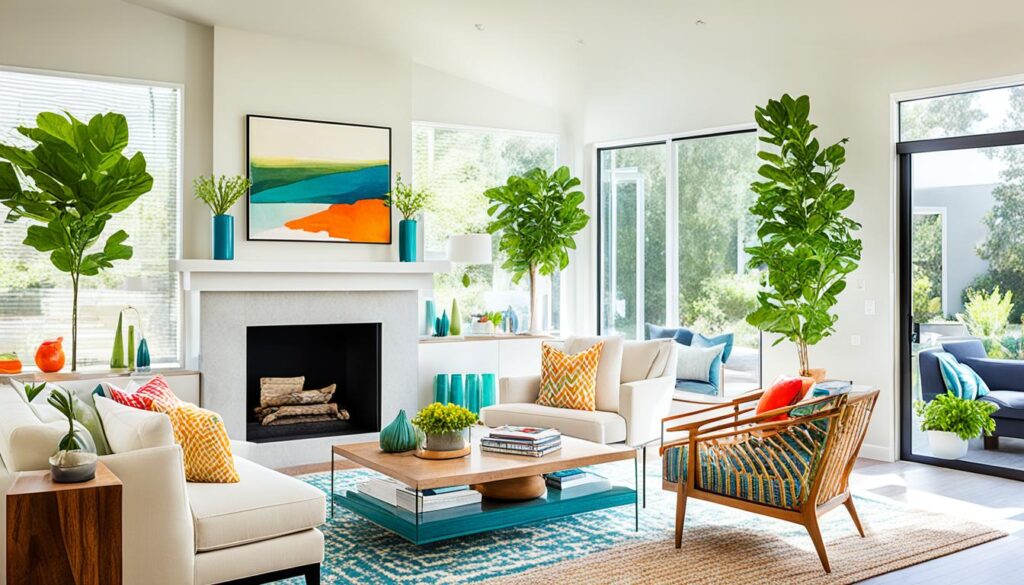
Interior design is a growing field in India, needing more skilled people to make spaces that are useful, green, and beautiful. Getting a degree in interior design can lead to starting your own business, giving you more control and money.
| Key Principles of Interior Design | Impact on Well-Being and Productivity |
|---|---|
| Space Planning | Optimised layouts that maximise functionality and flow |
| Colour Theory | Strategically selected hues to influence mood and energy |
| Materials Selection | Tactile and durable finishes that create a comfortable ambience |
| Lighting Design | Balanced illumination to enhance visibility and visual interest |
“The essence of interior design is to make space beautiful and comfortable, so people can spread themselves out in it.” – Edith Wharton
Interior designers can change ordinary spaces into special places that are good for our minds, bodies, and souls. ARCH College of Design & Business is a top place for learning interior design in India, giving students the skills they need to succeed.
Fashion Design: Fashioning Trends and Personal Style
Fashion design combines art, culture, and innovation to make clothes we love. Designers learn about fashion sketching, picking fabrics, and making clothes. They turn their ideas into real clothes. The fashion world is always changing, with designers leading the way in setting trends and influencing how we express ourselves.
Fashion Sketching, Fabric Selection, and Garment Construction
Fashion sketching is key in fashion design. It helps designers see their ideas and share them with others. Fabric selection is also vital, as it affects how a garment looks and feels. Knowing how to make clothes, from cutting to finishing, lets designers bring their sketches to life.
| Aspect | Description |
|---|---|
| Fashion Sketching | The art of visually representing design concepts and communicating ideas to pattern makers and manufacturers. |
| Fabric Selection | The choice of materials that can significantly impact the drape, texture, and overall aesthetic of a garment. |
| Garment Construction | Techniques such as cutting, sewing, and finishing that transform sketches into tangible fashion pieces. |
“Fashion is not something that exists in dresses only. Fashion is in the sky, in the street, fashion has to do with ideas, the way we live, what is happening.”
– Coco Chanel
The fashion world is vibrant and always changing. Designers create everything from custom pieces to clothes for everyone. By being good at sketching, picking fabrics, and making clothes, they make garments that look great and work well.
User Experience (UX) Design: Enhancing Digital Experiences
UX design aims to make digital experiences easy, fun, and intuitive. It involves a detailed process of user research, wireframing, prototyping, and testing. This ensures digital products meet the needs and likes of their users.
UX design greatly impacts the digital world. It deals with how digital products look, feel, and work. Graphic designers, on the other hand, focus on the emotional impact of design. Moving from graphic to UX design means learning new skills for solving complex problems.
The UX Design Process and Its Impact
The UX design process is a cycle of understanding problems, planning, creating wireframes, prototyping, and testing. This cycle makes sure the final product is easy and fun to use. It focuses on making products valuable, accessible, desirable, useful, and easy to find and use.
UX design is vital in today’s digital world. It improves user satisfaction and efficiency on various digital platforms, like websites, apps, and complex software. UX designers use skills in information architecture, interaction design, usability, wireframing, and visual design. They are key in shaping how we interact with digital tools.
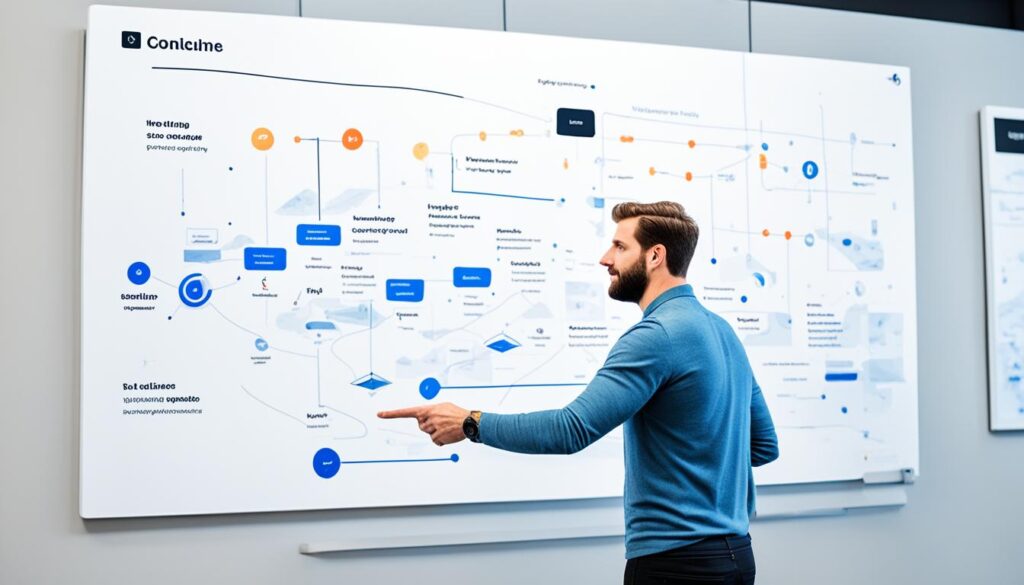
In our digital-focused world, UX design is crucial for creating products that put users first. By using a structured process and focusing on user experience, UX designers are changing how we interact with the digital world.
Environmental Design: Sustaining the Future
Environmental design includes sustainable design, landscape architecture, and urban planning. These fields use ecological principles and sustainable practices to make outdoor spaces better. They focus on creating spaces that are good for the planet and its people.
Sustainable Design
Sustainable graphic design uses eco-friendly materials like recycled paper and soy-based inks. Choosing recycled paper helps save trees and supports forest protection. Soy-based inks are better for the air and the land than traditional inks.
FSC-certified wood products help protect forests and their communities. Digital design tools make the process greener and reach more people. Going digital cuts down on paper use and waste, making design more eco-friendly.
Biophilic design connects us with nature and boosts well-being. Sustainable designers reuse and recycle materials to save resources. They work with suppliers who share their commitment to sustainability.
Eco-friendly packaging and reusable designs reduce waste in graphic design. Sustainable printing methods like print-on-demand also help cut down on waste and carbon emissions.
Landscape Architecture and Urban Planning
Landscape architects and urban planners are key to creating sustainable places. They use certifications like BREEAM and LEED to ensure buildings are green. Green roofs help with rainwater management and create a natural feel.
European countries like Norway and Finland are moving towards renewable energy. The Design School of Creative Arts offers top programs in architecture. Its graduates are highly sought after in the industry.
Environmental designers blend sustainable design, landscape architecture, and urban planning to make spaces that are beautiful and green. They work with communities to build a future that respects nature.
Emerging Trends and Technologies in Design
The design world is always changing, thanks to new technologies and trends. These changes are making design more immersive and engaging. They’re also making it more innovative. Technologies like augmented reality (AR), virtual reality (VR), 3D printing, and interactive design are leading this change.
Augmented Reality, Virtual Reality, and Beyond
AR and VR are changing how designers work. AR lets designers add digital stuff to the real world. This helps them see their ideas come to life instantly and create better experiences. VR takes designers into digital worlds, letting them design and test in three dimensions. This is pushing the limits of traditional design.
3D Printing: Bringing Designs to Life
3D printing is a big deal for designers. It turns digital designs into real objects. This has made making products faster and more customisable. Designers can now make unique items that were hard or impossible to make before.
Interactive Design: Engaging Users
Interactive design is big now. It’s all about making things that grab and engage users. Designers use AI and machine learning to automate tasks. This lets them focus more on being creative. This has led to digital interfaces that are smarter and more fun to use.
Designers need to keep up with these new trends and tech. They offer great chances to be more creative and innovative. By using these tools, designers can make things that look great and work well. They also make sure users have a great experience.
“The future of design is not just about creating beautiful aesthetics, but also about crafting experiences that captivate and empower users. By embracing emerging technologies, designers can unlock new realms of creativity and innovation.”
Graphic Design: A Boundless Canvas for Creativity
Graphic design is full of variety and always changing. Designers get to try out different styles and new ways of doing things. They keep learning and growing, making their art even better.
Designers find inspiration everywhere, from nature’s patterns to city life’s energy. By noticing and using these ideas, they make their work deep and real. This makes their designs touch and move people.
Graphic design mixes old art with new tech, leading to new ideas. With the market growing to $45 billion, its big impact is clear.
Graphic designers in the US make about $28 an hour or $59,000 a year on average. They’re great at using software, know about type and colour, and make designs that improve how people use things.
Graphic design covers many areas like web design and motion graphics. It’s all about mixing creativity with skill to be a master. Being imaginative helps designers come up with new ideas that change the game.
Good logos help brands stick in people’s minds, and people look at them a lot. Visuals on social media can make people feel things fast, making it a strong way to share stories.
Being imaginative leads to trying new things and breaking old rules, shown by the rise in demand for digital designers. Companies see the value in good design, with 65% of ads working well because of it. And 80% see their brand get more known after a new logo.
Websites that look good sell more, 40% more, than those that don’t. Freelancers in fashion and beauty make 30% more than those working for a company. There’s also a growing focus on eco-friendly design, which is making environmental design services grow by 15% a year.
Graphic design is a place where creativity, skill, and tech come together. It’s a world full of new ideas and stories told through pictures. Graphic design can make people feel things, change how they see things, and help businesses do well.
“Imagination is more important than knowledge. For knowledge is limited, whereas imagination embraces the entire world, stimulating progress, giving birth to evolution.”
– Albert Einstein
Cultivating Inspiration and Creativity
Graphic designers need to always find new sources of creative inspiration to make their work stand out. They can find inspiration by looking at nature, exploring different cultures, or trying new things. This constant search for inspiration keeps the design process exciting and fresh.
Observation, Exploration, and Reinterpretation
Good graphic designers know how powerful observation can be. By paying attention to the world around them, they can spot inspiration that others might miss. Exploration of new ideas is key too. It helps designers step out of their comfort zones and find new solutions. Then, reinterpreting these ideas in their own way makes their designs unique and true to themselves.
Most designers get their ideas from many places, not just online. They find inspiration in their thoughts, conversations, the places they live, music, nature, and buildings. Before starting a web design project, they prepare by getting to know the client, understanding the industry, and researching the users. Just 10 minutes of brainstorming about a brand can lead to lots of creative ideas.
Walking can make you more creative and help you switch from thinking logically to thinking creatively. Talking with others can also spark new ideas, which is why working together is important. If you can’t meet in person, joining online design groups can help. Nature also affects design choices, like the colors used and how things are arranged, with patterns like the Fibonacci sequence guiding designs.
Listening to music that fits with a brand can make designing more emotional and open up new ideas. Going to new places or experiencing different cultures can also make you more creative. Designers use inspiration boards to see what they want their design to look like, picking colors, fonts, and layouts.
Looking at buildings can inspire web designs by showing different styles and ways to design. Checking out great websites, design blogs, awards, social media, design showcases, templates, and podcasts can give designers lots of ideas.
The popularity of minimalism and flat design shows how graphic design is always changing. Using motion graphics makes digital designs more engaging. And, making designs more sustainable, using eco-friendly materials and saving energy, is becoming more important. These changes show how designers must always adapt and find new ways to be inspired.
Impactful Design: Evoking Emotions and Influencing Perceptions
Design goes beyond just looking good. It can make us feel things, send messages, and change how we see things. Graphic designers can make things that catch our curiosity, make us think differently, or just make us smile. By knowing how design affects us, they can make things that really connect with people, leave a mark, and bring about change.
Graphic design changes how we feel and see things in 8 key ways. It can talk to us without words, sharing ideas across the world. Warm colours like red and orange make us feel excited or urgent. Cool colours like blue and green make us calm. Good design helps make brands stand out and share information clearly. Bad design can make us feel frustrated and think poorly of something, showing how powerful design can be.
Designers use colour and symbols to make us feel certain ways. What we see in design is shaped by our culture and values, making it important to understand these when designing. Good design can make us act and decide differently, using visuals to guide us.
Design’s impact is more than just about looks. Quality design makes brands look trustworthy and credible, making people more likely to engage with them. A study found that 94% of people didn’t trust a website because of its design. Being consistent with your brand can make people recognize it more, and colours play a big part in what we choose to buy.
The effects of good design go beyond looks. Good graphics and designs can get people more involved, and a strong logo can make a brand more recognizable. Most people judge a brand by its website design, showing how important it is to have a professional look. A nice design can also make a business more profitable, showing how design affects the bottom line.
In the UK, graphic design is big, with about 200,000 designers working in different areas, says the Design Council. In the UK, what we see influences 92% of our buying choices, highlighting the role of colour and design in marketing. Colour trends change, with Pantone’s “Colour of the Year” helping guide design choices. McDonald’s uses red and yellow to make us feel energetic and excited, fitting their quick food and targeting kids.
“Graphic design has the power to tap into human emotions and create a profound impact.”
By understanding how design affects us emotionally and psychologically, graphic designers can make things that really connect with us and bring about change. Design is more than just making things look good. It’s about touching our feelings, changing how we see things, and guiding our actions. This shows the amazing power of creative design.
Conclusion
Design opens up a world full of chances for those wanting to show off their creative side and leave a mark with their art. You can dive into graphic design, industrial design, interior design, fashion design, user experience design, environmental design, or any other design field. With innovation, skill improvement, keeping up with trends, and always looking for new inspiration, you can start a fulfilling design career.
There’s a growing need for skilled designers because of fast information sharing, new tech, and the importance of thinking about people’s needs. Graphic design touches many areas like branding, technical and artistic drawing, and more. Designers often work in-house in companies not focused on design, or for design-focused agencies.
Let your dreams run wild, let your creativity flow, and join a world where your artistic ideas can change how we see things. Graphic design gives you a huge space to show your creative potential. You can make design solutions that change how people see things and touch their feelings. Grab the chances the changing design career offers, and start a path where your creative dreams can come alive.

